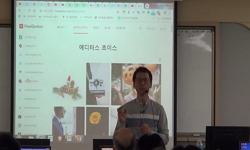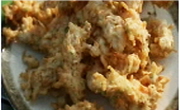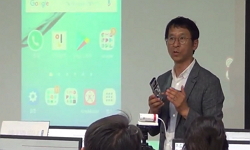효(孝), 제(悌), 충(忠), 신(信), 예(禮), 의(義), 염(廉), 치(恥) 여덟 자의 유교문자도 중 “충(忠)” 의 양상에 퇴계와 율 곡 사상이 미친 영향을 추정하고 밝히기 위해 역사와 자연환경을 정리...
http://chineseinput.net/에서 pinyin(병음)방식으로 중국어를 변환할 수 있습니다.
변환된 중국어를 복사하여 사용하시면 됩니다.
- 中文 을 입력하시려면 zhongwen을 입력하시고 space를누르시면됩니다.
- 北京 을 입력하시려면 beijing을 입력하시고 space를 누르시면 됩니다.
https://www.riss.kr/link?id=T15515580
- 저자
-
발행사항
경주 : 경주대학교 대학원, 2020
-
학위논문사항
학위논문(석사)-- 경주대학교 대학원 : 문화재학과 2020. 2
-
발행연도
2020
-
작성언어
한국어
- 주제어
-
발행국(도시)
경상북도
-
형태사항
26 cm
-
일반주기명
지도교수: 오세덕
-
UCI식별코드
I804:47022-200000298880
- 소장기관
-
0
상세조회 -
0
다운로드
부가정보
국문 초록 (Abstract)
효(孝), 제(悌), 충(忠), 신(信), 예(禮), 의(義), 염(廉), 치(恥) 여덟 자의 유교문자도 중 “충(忠)”
의 양상에 퇴계와 율 곡 사상이 미친 영향을 추정하고 밝히기 위해 역사와 자연환경을 정리하고
유교 문자도의 등장과 배경을 고찰하며, 민화 중 유교문자도의 유착과정을 살펴보았다.
유교문자도는 서민들이 사용하던 것으로, 조선의 유교 정책과 밀접한 관계가 있다. 조선 왕조
의 유교정책은 “충(忠)”, “효(孝)”를 중심으로 하여 소학의 생활 실천을 근거를 두고 있다. 소학의
실천과 교육은 향약과 서당, 서원을 통하여 사회전반으로 추진되었다.
이러한 향약의 모퉁이 돌이 된 것이 이황의 예안향약이며 율곡의 서원향약이다. 이 향약이 조선
말기 까지 서민생활의 규범이 된다.
유교문자도는 사대부 양반뿐만 아니라 서민의 생활가운데 조선의 정책과 더불어 교육과 교훈을
위해 실시되었다. 소학의 내용을 중심으로 익히고 답습하기 위하여 아동방이나 선비들의 학업 정
진을 위하여 선비들의 글공부 방 뒤에 둘려 쳐졌다.
18세기 후반 19세기 이르러 유교문자도는 지역적 양상이 뚜렷이 나타나는데 크게 수도권과 강
원도 지역으로 한 위의 지방과 경상도 안동을 중심으로 한 아래 지방과 제주도 지방으로 나눌 수
있다. 수도권과 강원도 지역을 중심으로 한 유교문자도의 특징 중 “충(忠)”의 도상을 보면 대나무
에 용(龍)이 화려하게 그려져 있는 것이 대부분이다. 이러한 양상은 율곡의 이이의 영향을 받았을
것으로 추정된다. 경상도 안동 중심으로 한 아래 지방은 대나무에 새우[鰕]가 크게 그려져 있는
도상이 대다수다. 이러한 양상은 이 황의 영향을 받았던 것으로 추정이 된다. 제주도 지방은 대
륙과 떨어진 특별자치 섬으로 어떠한 사상적 의미가 부여 되지 않는 것으로 용(龍)이나 새우[鰕]
의 도상이 거의 없다. 대나무에 용이 그려진 도상은 어변성룡(魚變成龍)의 용으로 입신출세(立身出
世)를 의미한다. 대나무에 새우가 그려진 도상은 새우의 상징인 지조와 절개 허리가 구부릴 정도
로 충성을 의미한다.
이이는 강원도내륙이 아닌 영동지역으로 동해 바다와 가깝다. 또한 태몽으로 신사사임당이 동
해안의 용(龍)을 품었다. 따라서 지리적 환경과 이이의 태몽과 학업, 사회적 추진을 미루어 볼 때
대나무에 용의 양상은 이황 보다 이이가 더 가깝다고 추정할 수 있다. 이황은 산간내륙의 안동지
방으로 바다와는 다소 거리가 있다. 또한 이황의 어머니 박씨는 태몽으로 학(鶴)을 품었다. 따라서
이황은 자연적․지리적 환경과 학업, 업적으로 보았을 때 새우가 허리가 구부릴 정도로 충성을 맹
세하는 선비의 모습에 더 가깝다고 추정할 수 있다. 용과 새우의 도상이 뚜렷이 나타나 있지 않는
제주도는 한반도 남쪽의 큰 섬으로 성리학의 사상을 논할 필요성이 없다고 본다. 제주도는 이미
일 천개정도의 신(神)이 있다. 제주도민 대부분은 신을 모시고 있었기에 조선의 유교적 사상을 기
억 시키고 상기시키기란 결코 쉽지 않았을 것이다. 조선의 정책적 수립에도 불구하고 유교화가 되
지 않았던 결정적 이유는 바로 지리적 영향으로 그들만의 독특한 문화가 컸던 것으로 추정된다.
그러나 지금까지도 제주도 문자도가 잘 보존되어 내려오는 것은 많은 유학자들의 노력과 조선왕
조의 끊임없는 백성의 유교화 추진이라 본다. 그러한 노력이 제주민의 병풍이라는 생활의 가구의
도구로 이용되면서 오늘날 까지 제주도 유교문자도가 전해져온다
다국어 초록 (Multilingual Abstract)
Confucian munjado has filial piety, brotherly love, loyalty, trust, propriety, righteousness, integrity, sensitivity in eight-panel folding screen. I organized history and the natural environment reviewed the appearance and background of confucian mun...
Confucian munjado has filial piety, brotherly love, loyalty, trust, propriety,
righteousness, integrity, sensitivity in eight-panel folding screen. I organized history
and the natural environment reviewed the appearance and background of confucian
munjado, and looked at the process. In addition, Confucian munjado loyalty of Toigye
and Yulgok in the said Strategy and the influence.
Confucian munjado was used by the common people and is closely related to the
Confucian policy of Choseon. The confucian policy of the Choseon Dynasty is based
of the Sohak of ‘loyalty’ and ‘filial piety’. The practiced and education of the So-Hak
was promoted throughout society through the use of Hyan-yak, Seo-Dang, Seowon.
The corner stone of this Hyan-yak is Toigye’s Yean-Hyan-yak and Yulgok’s
Seowon-Hyan-yak. This Hyan-yak becomes the normal of the common people’s life
until the end of Choseon Dynasty.
Confucian munjado was focused on children’s room and scholars’ study rooms to
help them study.
Confucian munjado in the 18th and 19th centuries had a distinct regional aspect.
there are three types of these : Seoul metropolitan Area, Gangwon Province,
Gyeongsang Province, and Jeju Island. Most of the paintings ‘loyalty’, located in the
Seoul metropolitan Area and Gangwon-do show dragons painted brilliantly on
bamboo. This pattern is assumed to thave been influenced by the Yulgok. If you look
at the picture of the ‘loyalty’ in Gyeongsang-do most of them have large shrimps on
the bamboo. This pattern is believed to have been influenced by Toigye. There are
few dragons or shrimps in the picture of Jeju Island. This pattern is believed to have
had little impact on the region, which is a special autonomous region away from the
continent.
Painting of dragons on bamboo stands for the rise and rise a fish metamorphosed
into a dragon. Painting of shrimp on bamboo means fidelity and incision, which
means loyalty to the waist.
Yulgok Yeongdong area, not a huge interior plateau, Gangwon Province Dong-hae
to near the sea. Conception dreams also by Shin- Saim-Dang was a dragon in the
East Sea. Therefor, considering the geographic environment and the academic and
social promotion, we can assume that the picture of dragons in bamboo is closer to
Yulgok than Toigye. Toigye, considering the geographic environment and the
academic and social promotion, it can be assume that the Seon-bi, who swears
loyalty enough for the shrimp to bend at the waist is closer. Jeju Island, which does
not have a clear picture of dragons and shrimps, is a large island south of the
Korean Peninsula and does not need the discuss confucian ideas.
Jeju Island has a thousand gods. As most Jeju people have gods, it is never easy
the to remember and recall the confucian idea of Choseon. Despite the policy
establishment of Choseon, it was not possible to become confucian because of
geographical influence. Because this environment created their own unique culture.
To this day, however, I believe that the preservation of Jeju munjado is due to the
efforts of many confucian scholars and the continuous confucianization of the
Choseon Dynasty. Such effort are being used as tools for furniture of Jeju people’s
daily lives, and Jeju Island is still being passed on to this day.
목차 (Table of Contents)
- Ⅰ. 서론 1
- 1. 연구목적 1
- 2. 선행연구고찰 2
- 3. 연구방법 및 연구내용 4
- Ⅱ. 연구배경 6
- Ⅰ. 서론 1
- 1. 연구목적 1
- 2. 선행연구고찰 2
- 3. 연구방법 및 연구내용 4
- Ⅱ. 연구배경 6
- 1. 유교문자도의 시작과 변천 7
- 1.1 문자도의 기원과 변천 7
- 2. 유교사상의 영향을 받은 서민들의 유교문화 11
- 3. 19세기 서민들에게 나타난 유교문자도 15
- Ⅲ. 유교문자도 “충(忠)”자에 나타난 상상과 특징 20
- 1. 조선 유교의 “충(忠)”사상 20
- 2. 유교문자도 “충(忠)”자에 나타난 특징 22
- 2.1 지역적 특징 22
- 2.2 도상의 특징 23
- 1) 용 23
- 2)새우 28
- Ⅳ.유교문자도의 “충(忠)”에 나타난 용ㆍ새우의 양상 30
- 1. 서울경기 및 강원도 문자도에 나타난 용ㆍ새우의 양상 31
- 2. 경상도 및 전라도 문자도에 나타난 용ㆍ새우의 양상 40
- 3. 제주도 문자도에 나타난 용ㆍ새우의 양상 46
- Ⅴ. 결론 48
- 참고문헌 50
- 표 목록 54
- 국문초록 72
- ABSTRACT 74












